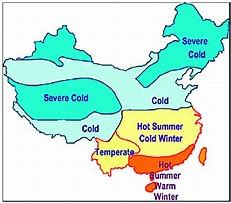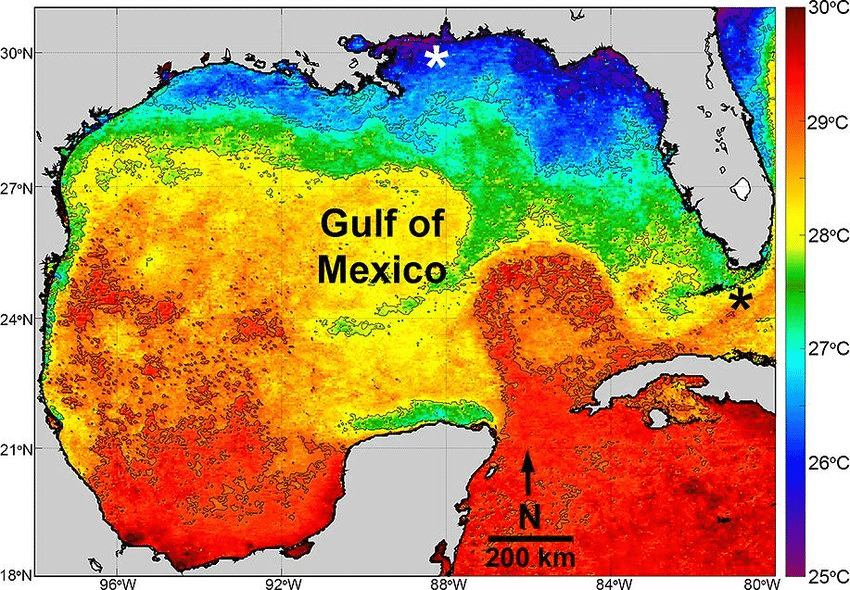GC Leong Summary: The Warm Temperate Eastern Margin Climate or China Type Climate | Geography for UPSC CSE PDF Download
Introduction
(i) This type of climate is found on the eastern margin of the continent in warm temperate latitudes, just outside the tropics & comparatively has more rainfall than the Mediterranean climate in the same latitudes, coming mainly in summers.
(ii) Eastern margin temperate climate can further be subdivided into 3 major types:
China Type
(i) Temperate monsoonal (Central & North China including southern Japan)
Gulf Type
(ii) Southeastern United States bordering Gulf of Mexico (slight monsoonal)
Natal Type
(i) Natal (Africa), South Wales (Australia), Parana (Southern Brazil)-Paraguay- Uruguay & Northern Argentina (South America)
(ii) Warm temperate eastern margin climate is typified by a warm, moist summer & a cool, dry winter strongly modified by maritime influence.
(iii) Occasionally, the penetration of cold air from the continental interiors may bring down the temperature to the freezing point, but most of the time it is pleasantly warm.
(iv) Rainfall is anything in-between 75 cm to 150 cm, fairly distributed throughout the year, with no dry month, except in the interiors of central China.
(v) Rain comes either as convection or orographic in summers & from depressions in winters.
China Type Climate
(i) Great landmass of Asiatic interior & Pacific Ocean induces great pressure changes between summers & winters, giving rise to a temperate monsoonal type of climate.
(ii) In summers, intense heating of Asiatic interior sets up a region of low pressure in summer & tropical pacific air stream is drawn in as the rain-bearing South-East Monsoon
(iii) This results in heavy precipitation in China, approx. 100 cm of rainfall per annum, decreasing landwards with a summer maximum in June & July

(iv) In winters, a steep pressure gradient is set up between the cold interiors of Mongolia & Siberia, & a warmer Pacific coastland;
(v) This results in outward flow of continental polar air as the North-West Monsoon, bitterly cold & very dry, causing only a little rain but considerate snow as the cold winds are wanned & moistened.
(vi) Other characteristic features of China type of climate is great annual temperature range & occurrence of typhoons (intense tropical cyclones) that originate in the Pacific Ocean, & move westward to the coastlands, bordering the South China Sea.
Gulf Type Climate
(i) Gulf-Atlantic regions of the US experience a type of climate similar to that of central China except the monsoonal characteristics are less well established
(ii) There is no complete reversal of winds & the pressure gradient between mainland America & the Atlantic Ocean is less marked.

(iii) Annual rainfall is heavy with an annual average of 100-150 cm
(iv) No distinct dry period with a tendency towards summer maximum, brought by the onshore trade winds which swing landward from the Atlantic.
(v) The amount of rain is increased by frequent thunderstorms in summers & hurricanes by Sep & October, with some places showing a secondary maximum in winters.
(vi) Annual range of temperature is much smaller compared to china type of climate
(vii) Sometimes violent tornadoes occur, due to intense heating of the land.
Natal Type Climate
(i) The narrowness of the continents & the dominance of maritime influence eliminate the monsoonal elements, which characterize the corresponding climates of the N Hemisphere.
(ii) The south-east trade winds bring about a more even distribution of rainfall throughout the year with a mean annual of approx. 100 - 150 cm.
(iii) The passage of depressions along the southern edges of warm temperate eastern margins results in a slight autumn-winter maximum i.e. from March - July.
(iv) Annual temperature range is small without any really cold month; however southern continents have violent local storms viz. Southerly buster (a violent cold wind) in South Wales, corresponding cold wind in Argentina & Uruguay is Pampero & Berg (a hot, dry wind) in south-east Africa.
Natural Vegetation
(i) The eastern margin of the warm temperate latitudes has a much heavier rainfall than either the western margin or the continental interiors & thus has luxuriant vegetation.
(ii) The lowlands carry both evergreen broad leave forests & deciduous trees, quite similar to those of the tropical monsoon forests.
(iii) On the highlands, are various species of conifers such as pines & cypresses, which are important soft-woods
(iv) As the perennial plant growth is not checked by either a dry season as in the Mediterranean or a cold season as in cool temperate regions, conditions are well suited to a rich variety of plant life, including grass, ferns, lianas, bamboos, palms & forests, with a well-distributed rainfall over the year.
(v) Warm temperate eastern margins are home to a number of valuable timber & economically viable species.
Eucalyptus
(vi) Australia (Exporter)
Parana Pine, Quebracho (Axebreaker)
(vii) SE Brazil, E Paraguay, N Argentina
Leaves of Yerba Mate Trees
(viii) Paraguay Tea
Chestnuts, Ironwoods & Blackwoods
(ix) Highlands of Natal
Palm trees
(x) Coastal areas of Natal
Oak, Camphor, Camelia & Magnolia
(xi) China & Southern Japan
Economic Development
(i) The warm temperate eastern margins are the most productive parts of middle latitudes, due to adequate rainfall, no prolonged drought with the cold season warm enough for most of the crops to survive; though summer is the busiest part of fanning year
China
(i) Rice, Tea & Mulberries (for feeding silk won for sericulture)
Gulf (N America)
(i) Corn, Cotton, Tobacco
Natal (S America)
(i) Cane sugar, Cotton & Tobacco
South America
(i) Coffee, Maize, Pines, Paraguay Tea, Wheat, Cattle & Sheep
South Wales & Victoria
(i) Dairying (Milk, Butter, Cheese), Cotton, Cane Sugar, Maize
(ii) Despite being the world’s greatest rice-growing area, China does not export & even imports food grains; & grows rice & tea for subsistence purpose only due to its intense population.
Corn
(i) Apart from its ease of cultivation, wrt soil, climate & labour requirements, corns’ most outstanding feature is its prolific yield
(ii) It gives almost twice as much food per acre as wheat or other cereals the USA accounts for more than 50 % of the world’s corn production but exports only 3%
(iii) Most of the com in the USA is used in fattening animals as they allow them to hog the corn down in the fields itself
(iv) This is done to get more monetary gain as fattened animals are sold to the meat plants.
Cotton
(i) Deep South-Fibre is vital for economic well being.
(ii) The gulf type of climate is the best for cotton growing
(iii) Cotton likes ample rain and annual precipitation of around 40 inches is essential.
(iv) Adequate moisture supply coming from frequent light showers with bright sunshine between them gives the highest yield.

(v) Commercial Cultivation: Most favourable areas-Mississippi flood plains, the clayey Atlantic coastlands of Georgia and South California, black prairies of texas and red prairies of Oklahoma.
(vi) Best Cotton-Comes from the maritime districts where the sea breezes and the warming effect of the ocean are most strongly felt.
(vii) The sea island cotton grown in the islands off the coast of Georgia and South Carolina is long stapled and is the best in the world.
(viii) Further inland, the staples are shorter.
Tobacco
(i) Associated with gulf type of climate
(ii) Native crop of America
(iii) There is no so universally known as the Virginia tobacco
(iv) The humid atmosphere, the warmth and the well-drained soils of the gulf states, enable tobacco to be successfully cultivated in many of the eastern states of the USA e.g. Virginia, Maryland, Georgia, North and South Carolina, Kentucky and Tennessee.
Crop Cultivation in the eastern margins of the southern hemisphere
(i) Natal Type of Climate.
(ii) The warm moist summers and frost-free winters not only support many crops but also animals.
(iii) Cane sugar is the dominant crop followed by cotton and tobacco.
(iv) Maize is extensively cultivated for use both as a mealie an important food item for Africans and silage, an animal fodder for cattle rearing.
|
180 videos|482 docs|193 tests
|
FAQs on GC Leong Summary: The Warm Temperate Eastern Margin Climate or China Type Climate - Geography for UPSC CSE
| 1. What is the China Type Climate? |  |
| 2. What are the main characteristics of the Gulf Type Climate? |  |
| 3. What is the Natal Type Climate? |  |
| 4. What is natural vegetation? |  |
| 5. How does economic development impact agriculture in the given regions? |  |

|
Explore Courses for UPSC exam
|

|




















